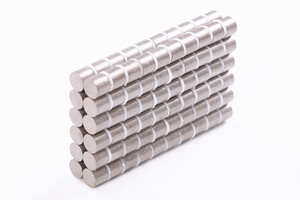Blog Information
- Posted By : zhijiang cii
- Posted On : Jan 11, 2021
- Views : 234
- Category : General
- Description : Samarium Cobalt magnets (SmCo Magnet) is the sister Rare Earth Magnet to NdFeB. SmCo is sometimes called a Rare Earth Cobalt magnet.
Overview
Samarium Cobalt magnets (SmCo Magnet) is the sister Rare Earth Magnet to NdFeB. SmCo is sometimes called a Rare Earth Cobalt magnet.
SmCo magnets exist in two alloy varieties.Sm1Co5 (SmCo1:5) is the original SmCo alloy.Sm2Co17 (SmCo2:17) is the more common used and stronger SmCo alloy with SmCo26 being the most popular variety.
Sm1Co5 contains mainly Sm and Co and contains no iron (Fe) so it has excellent corrosion resistance -it should never corrode with water.Sm2Co17 is mainly Sm and Co but also contains Cu,Hf &/or Zr, sometimes Pr, and Fe. The low free iron content in Sm2Co17 means it is technically prone to a little surface corrosion when in water.
Sm2Co17 is regarded as having good to very good corrosion resistance (far superior to NdFeB) in most applications. A simple coating of Ni Cu Ni will very likely solve any risk of corrosion.Samarium Cobalt magnets (SmCo) may be weaker than NdFeB magnets at room temperature but SmCo will often outperform NdFeB above +150 to +180 deg C(subject to the application and grade).
SmCo magnets are ideal for aerospace, automotive,sensor, loudspeaker, motor and military applications.In mission critical applications they are an ideal first choice.
SmCo magnets offer minimal change in magnetic output over a small temperature change (with far less variation than NdFeB or ferrite; only Alnico is better).The Low Temperature Coefficient (LTC) versions have less variation in magnetic output with temperature change (due to added Gd and Er).
Alnico Ring Magnets performance over a massive range of temperatures (from near to -273 deg C up to +350 deg C).The H versions Sm2Co17 have higher Hci and operate up to +350°C rather than +300°C. SmCo and NdFeB could be interchangeable e.g.SmCo30 should perform very similarly to N30 at ambient temperature.
